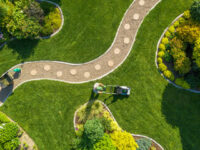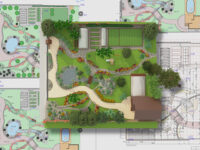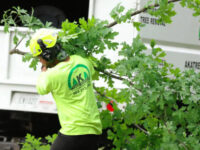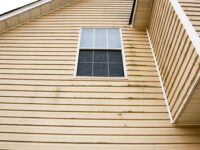Tree Health – How to Keep Your Tree Healthy
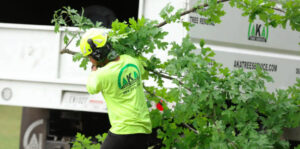 A healthy tree should show yearly growth in both its trunk and branches. Dead branches are major “come hither” invitations for insects and disease unless pruned ASAP. It’s a good idea to periodically don a detective’s cap and examine your trees for defects that could indicate problems. That will help you identify adverse site conditions and take steps to prevent or minimize diseases and pests. Click https://www.prvtreeservices.com/ to learn more.
A healthy tree should show yearly growth in both its trunk and branches. Dead branches are major “come hither” invitations for insects and disease unless pruned ASAP. It’s a good idea to periodically don a detective’s cap and examine your trees for defects that could indicate problems. That will help you identify adverse site conditions and take steps to prevent or minimize diseases and pests. Click https://www.prvtreeservices.com/ to learn more.
The trunks and branches of a tree serve many functions, including support, structural stability, and storage for unused food. They also carry water from the roots to the leaves and stems and transport new nutrients from the sources to the rest of the tree. In addition, limbs help the tree adapt to its environment by changing with the seasons and responding to environmental stresses like frost.
A healthy tree has a strong, dominant leader that supports the scaffold of lateral limbs. Its branches are evenly spaced, and its trunk is straight and free from cracks and fungus. In addition, its stems are not overgrown, as this creates an uneven canopy and weakens the structure of a tree. Lastly, its trunk should have a smooth, deep brown bark without flaking or peeling (except on birches and maples).
Branches and twigs are the flora that give trees their identity, with some species of trees growing in simple straight lines and others having intricate systems of branches that swirl and twist to gain access to sunlight. Whether a tree is young or mature, its branches should be well-developed with a full complement of twigs and stems to support the canopy. Healthy branches are firmly attached to the trunk, do not show signs of looseness or bending, and their color is even throughout.
Trees must have adequate soil nutrients for proper growth and health, and a good understanding of the soil type they are planted is important. A tree care professional can test the soil and recommend nutrient amendments to ensure the tree gets everything it needs from the ground up.
A tree’s root system grows in a dense network that anchors it to the ground and helps it absorb nutrients for proper health. Roots also function as a defense mechanism against pathogens, weeds, and other threats.
Roots are most impacted by environmental stressors, such as overwatering and drought, because they can suffocate if the soil is saturated or starved for oxygen when it is too dry. In addition, the physical and chemical composition of soil impacts the root system of different species of trees, and knowledge of this is key to selecting trees that will thrive in an area.
The leaves of a tree provide their primary means of photosynthesis, and if they are damaged or removed, the overall health of a tree is negatively impacted. Leaves may be damaged by pests, fungal diseases, or other pathogens, and these conditions can result in leaf spots (discolored lesions on the surface of the leaf), yellowing foliage, wilting or drooping leaves, loss of vigor, reduced growth, and twig and branch dieback. Disease symptoms vary according to the causal agent but are typically more noticeable when the leaves are exposed to direct sunlight.
Diseases that damage leaves are the most common and serious threats to a healthy tree. In general, conditions cause leaves to droop and wilt, and in severe cases, can result in death. These include crown gall, a tumor-like growth on the stem or trunk of a plant caused by the bacteria Agrobacterium tumefaciens; leaf spot; vascular wilt; and rots such as root rot. Diseases of the leaves often affect other parts of the tree as well and can weaken or kill it.
Infections and infestations of leaves by insects and other vertebrates also negatively impact a tree’s health. Defoliators such as western tent caterpillars and gypsy moths can severely reduce the vigor of trees, while wood borers and sap-sucking insects can quickly kill a healthy tree. Insects that feed early in the year, such as fall webworm and orange-striped oakworm, generally have more detrimental effects than those that provide later in the season; the young succulent leaves of a spring-feeding insect serve to store energy that the plant uses in the winter; defoliation of these leaves in the spring results in an immediate reduction in a tree’s vigor.
Leaf spot diseases interfere with photosynthesis by forming small brown or yellow spots on the leaf’s surface; fungi that cause these diseases are known as stromatophores and can be found in many deciduous and evergreen species. While most leaf spot diseases are a minor stress on a healthy tree, they can become serious if moderate to severe leaf loss occurs two to four years in a row.
A healthy tree has a thick layer of bark that helps to shield the wood underneath, keeping out pests and diseases. If the bark is missing, cracked, or splintered, it’s a sign that the underlying wood may be damaged. If the bark peels away completely, the tree will likely die.
The tree’s bark protects its roots, helping to absorb nutrients and moisture and allowing it to withstand weather elements. While the bark may become discolored or spotted with mildew, it should appear smooth and healthy.
If you see signs of damage to the bark, contacting a professional tree care company is a good idea. These professionals can diagnose and treat the problem to ensure the tree continues to realize its full potential. The right soil conditions, the right amount of water, and regular maintenance can all help a tree thrive.
Bark is a parental control app that helps keep kids safe online by monitoring 30+ social media platforms and various other apps at the account level, so it can monitor activity on these platforms regardless of what device your child uses them on. That includes the ability to watch text messages, photos, and videos.
Bark is relatively affordable, with plans that start at $5/month. The app also offers a free week-long trial.
The app is easy to use and has a clean, intuitive interface. Parents can easily create a custom daily screen schedule and block access to websites or apps. They can also get alerts for issues like porn, sexting, bullying and suicidal thoughts.
Some of the more advanced features include the ability to track your child’s location, create lists of exceptions, and check in. The app also has a comprehensive FAQ page that answers 100+ questions with detailed articles.
One of the best things about Bark is that it encourages parent and child communication. During the installation process, they remind parents to have a frank conversation with their children about what they’re doing online and why they’re using the app.
A twig is a thin, flexible branch or stem of a tree or shrub that may be green, fresh, dry, and withered. It is a part of the stem that carries buds and leaves.
Twigs, as well as the branches and trunk of a tree, provide structural support. Trees also use twigs for energy, through the uptake of carbon dioxide from the air, to help fuel the photosynthetic process that drives growth. The twigs also serve as a means of moving water throughout the plant.
Tree health is often judged in part by the appearance of twigs. They can be an indication of the general health of a tree or a specific problem.
Infestations by twig girdlers can cause ragged and unattractive twigs in oaks (Cerambycidae). These long-horn beetle species attack numerous types of shade, nut, and fruit trees. Common hosts include persimmon, pecan, elm, hickory, oak, honeylocust, hackberry, poplar, linden, redbud, basswood, and dogwood.
Adult female twig girdlers prepare to lay eggs by chewing a V-shaped groove around the outside of a small twig, effectively girdling it. She then deposits an egg beneath the bark in the girdled section of the twig. The egg hatches in late summer, releasing larvae that feed inside the dead portion of the twig, where they overwinter and emerge as adults the following spring.
The twigs of infested trees will have ragged edges and a smooth, concave surface on the interior. They will look like beaver damage in miniature.
The fungus Botryosphaeria canker causes twig blight in oaks and other hardwoods. The disease primarily affects the terminal 4 to 6 inches of the twigs, where the leaves bend back toward the twig and turn straw-brown or brown. This twig decline and general thinning of the tree’s crown is most noticeable in the summer or fall when weather conditions promote frequent rains and leaf production.

